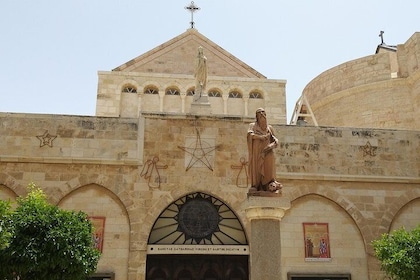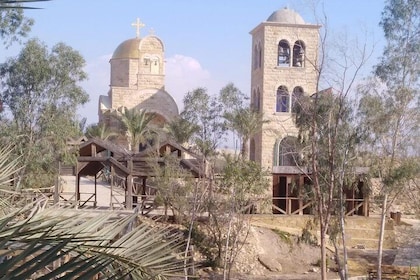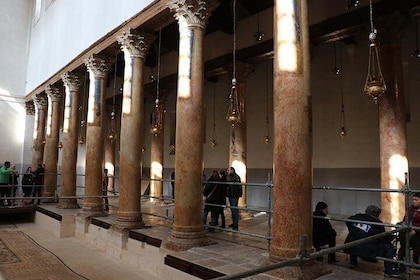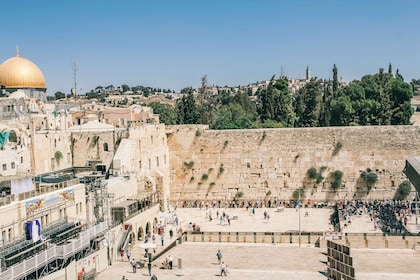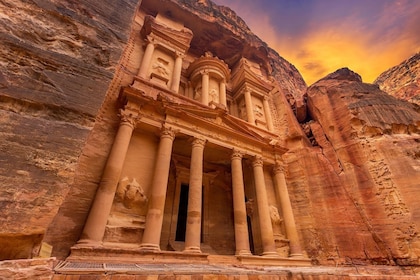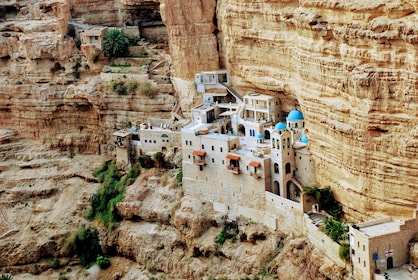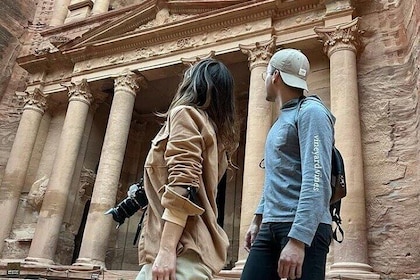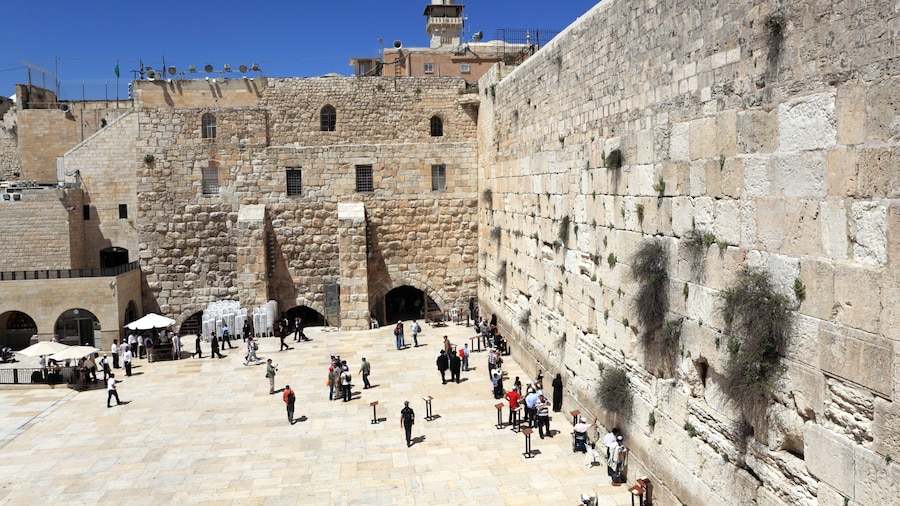Visit this landmark Roman Catholic church, believed to stand on the very same site where the Virgin Mary died and ascended to heaven.
With its lead-covered conical roof, bell tower and four turrets, the Romanesque-style Dormition Abbey is easily recognizable. Learn about the reason behind the church’s name and view its multiple mosaics, which depict biblical scenes.
The church was built in 1910 by the German Benedictine order. The structure is believed to occupy the site where the Virgin Mary lay down to die, before her ascension to heaven. The church’s name, dormition, means the process of falling asleep and refers to the Virgin Mary’s peaceful passing into the afterlife. Appreciate the restoration of the building, which suffered damage during clashes in 1948 and 1967.
In the courtyard of the abbey, look for the remnants of a Byzantine mosaic floor. The mosaic fragments, which are protected by glass, are all that remains from an earlier Byzantine church that stood on the site.
Enter the spacious and bright main nave of the church. Examine the multiple mosaics, which illustrate events from the Bible, adorning the walls, domes and floors. The most notable of them is the golden mosaic in the apse, which shows Mary holding the baby Jesus. Explore the chapels around the main nave each chapel is dedicated to a different saint or saints.
Venture downstairs to the crypt, where a statue of the Virgin Mary honors the most prominent female figure in Christianity. The statue depicts her lying on her deathbed. Every day, pilgrims kneel around the reclining figure and pray.
Before leaving, browse the on-site store, which sells books and souvenirs. A coffee shop offering hot drinks and snacks is also located in the front courtyard.
Dormition Abbey is open daily and entrance is free. Only worshippers can attend services. As with many of Jerusalem’s religious sites, modest dress is required. Find the church on Mount Zion, near the Last Supper Room, where Jesus and his disciples ate together for the last time before his death.






